Introduction
Bike trainers allow you to ride indoors when weather, lack of daylight, or other factors prevent cycling outside. They attach to your regular bike and apply resistance to the rear wheel as you pedal, enabling you to simulate riding on roads or trails. Discover the difference between magnetic and fluid bike trainers in this comprehensive guide. Unveiling their unique working principles, benefits, and drawbacks, we’ll help you determine which trainer aligns best with your preferences. Whether you seek a lifelike road experience or need to consider your budget, we provide valuable insights to make an informed decision. Explore the world of cycling trainers fluid vs magnetic and choose the perfect fit for your indoor cycling journey.
TABLE OF CONTENTS
How Fluid Bike Trainers Work
Fluid trainers contain a liquid chamber that houses oil, silicone, or other specially engineered fluids. As you pedal faster, the increased speed spins the flywheel inside the fluid faster, creating more friction and drag.
This variable, self-adjusting resistance closely mimics the feel of riding a real bike on the road. For example, when you hit a hill or increase your speed, it takes more effort to push the pedals on a real bike. Similarly, fluid trainers automatically increase resistance as you pedal faster to simulate this real-world variable resistance. This makes for very realistic riding indoors.
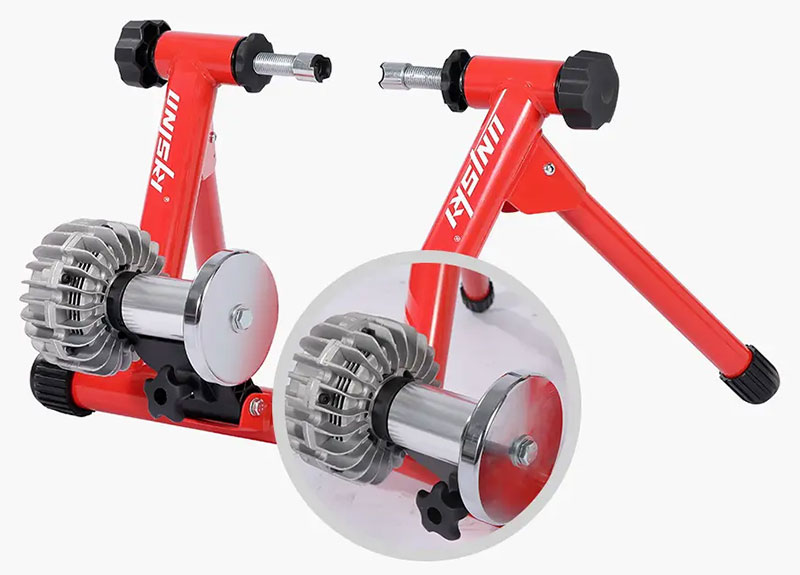
How Magnetic Bike Trainers Work
Magnetic trainers use magnets positioned near a metal flywheel. As you pedal and spin the flywheel, eddy currents are generated which the magnets resist against, creating drag.
By adjusting how close the magnets are to the flywheel, typically with a lever or knob, you control how much resistance the magnets apply.
The closer they are, the more resistance you feel. A magnetic trainer’s resistance stays fixed at a given setting until you manually adjust it. So you can dial in a specific resistance level, like simulating a 5% hill. But the trainer won’t automatically adjust resistance like a fluid trainer.
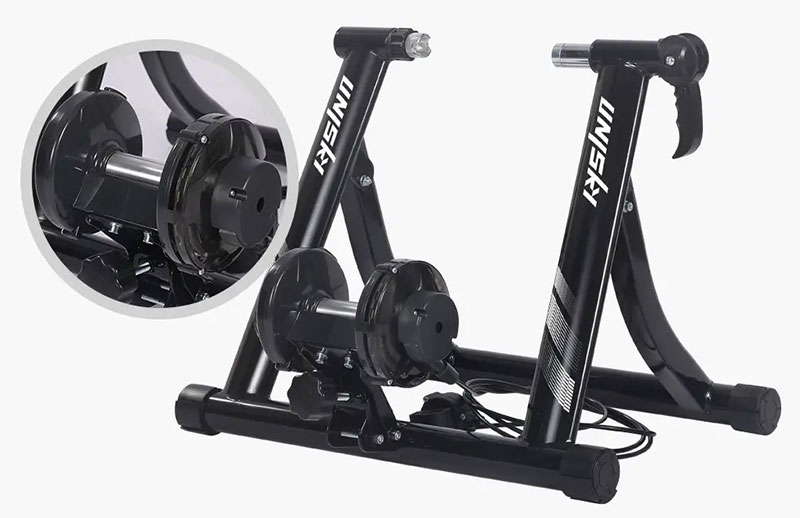
Fluid vs Magnetic Resistance Feel
The main difference riders notice is that fluid trainers automatically and smoothly vary resistance in response to your pedaling, closely replicating the feel of riding outdoors. In contrast, magnetic trainers have pre-set resistance levels that stay consistent until the user manually adjusts them. So fluid provides a wide, natural range of resistance while magnetic allows manually controlling a fixed resistance setting at any time. Advanced magnetic trainers with electronic shifting can simulate gradients.
Noise Level Differences
Fluid trainers operate much quieter than magnetic models and the fluid resistance is very smooth.
There is a mild “swooshing” sound from the fluid chamber. Magnetic trainers have improved in noise levels recently but can still emit some louder hums or vibration noises, especially at high wheel speeds. So fluid trainers provide a quiet, road-like sound while magnetic trainers’ noise reminds you it’s an exercise machine.
Maintenance and Use
Fluid trainers are generally low maintenance but the sealed fluid chamber may need occasional topping off or changing after extensive use as the fluid loses viscosity.
Magnetic trainers make it easy to adjust resistance on-the-fly with a lever, knob or electronically during your ride. So each design has advantages for ease of use and adjustments.
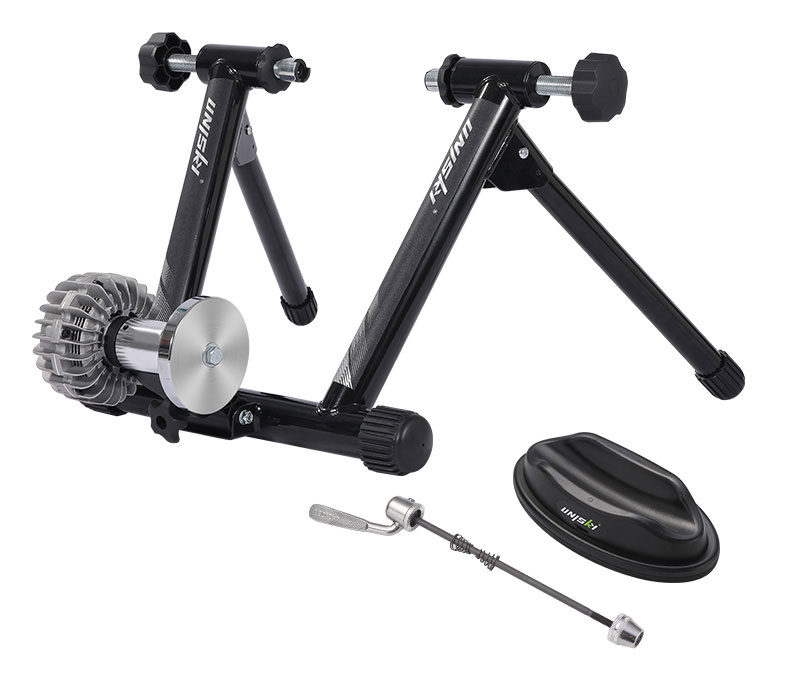
Cost Differences
Fluid trainers range in price from $300 up to $1200+ for high-end smart trainers with electronics and connectivity. Magnetic models start around $200 for basic wheel-on trainers and go up to $700+ for top-end smart magnetic trainers.
So fluid trainers generally sit at a higher price point across the spectrum, but both offer options at different budget levels.
Pros and Cons of Each Type
| Pros | Cons | |
|---|---|---|
| Fluid trainer | Realistic variable resistance Quiet operation Smooth pedaling | More costly Fluid maintenance needed occasionally |
| Magnetic Fluid Trainertrainer | Lower initial cost Easily control resistance during a ride Improved durability with no fluids | Louder operation Resistance isn’t as seamless feeling |
Are Fluid or Magnetic Trainers Better?
There’s no universally “best” type of direct-mount trainer. The best trainer for you depends on your specific needs, budget, and desired training experience.
Fluid if you prioritize the most natural, outdoor riding experience possible indoors. Magnetic if cost is a main factor and you want the ability to manually control resistance. If possible, demo each type at your local bike shop before buying.
Connectivity and Data
Many modern fluid and magnetic trainers now come equipped with smart features and electronics. This includes:
- ANT+ and Bluetooth connectivity to pair with apps, devices, and remote controls
- Integrated sensors to measure speed, power, cadence, heart rate, etc.
- Display screens to view performance metrics in real-time
- Ability to analyze workout data and track progress over time
While basic models lack electronics, mid-range and high-end trainers integrate these smart features to varying degrees. This allows you to get more data and a more immersive, interactive experience if desired.
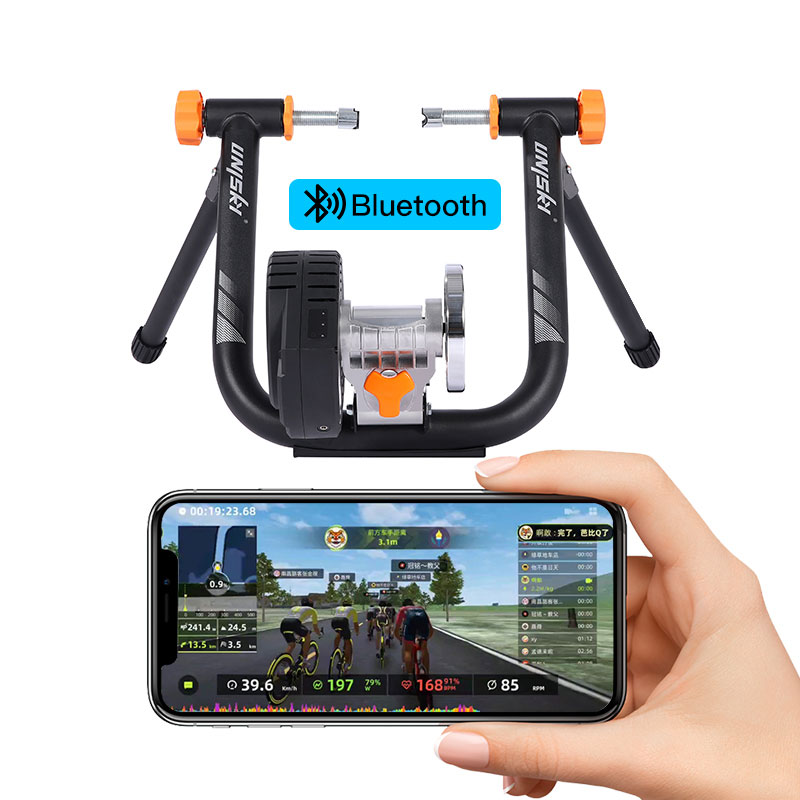
Simulating Terrain
Another benefit of trainers is the ability to simulate real-world conditions indoors. This includes:
- Simulating uphills, downhills, and flat terrain by automatically or manually adjusting resistance levels
- Using apps to mimic outdoor routes and topography profiles
- Adding accessories like grade simulators to tilt bike and further enhance the terrain experience
With a smart trainer, you can tackle a route with all its climbs, sprints, and downhills without leaving home.
Suggested Uses
Fluid and magnetic trainers can both serve multiple training purposes:
- Maintaining general cardiovascular fitness when outdoor riding isn’t feasible
- Structured interval sessions and workouts
- Building leg strength and muscular endurance
- Pursuing specific competitive cycling and triathlon goals
- Enjoying virtual group rides and races
- Physical therapy and low-impact training when recovering from injury
Both trainer types enable effective training, so choose based on your needs.
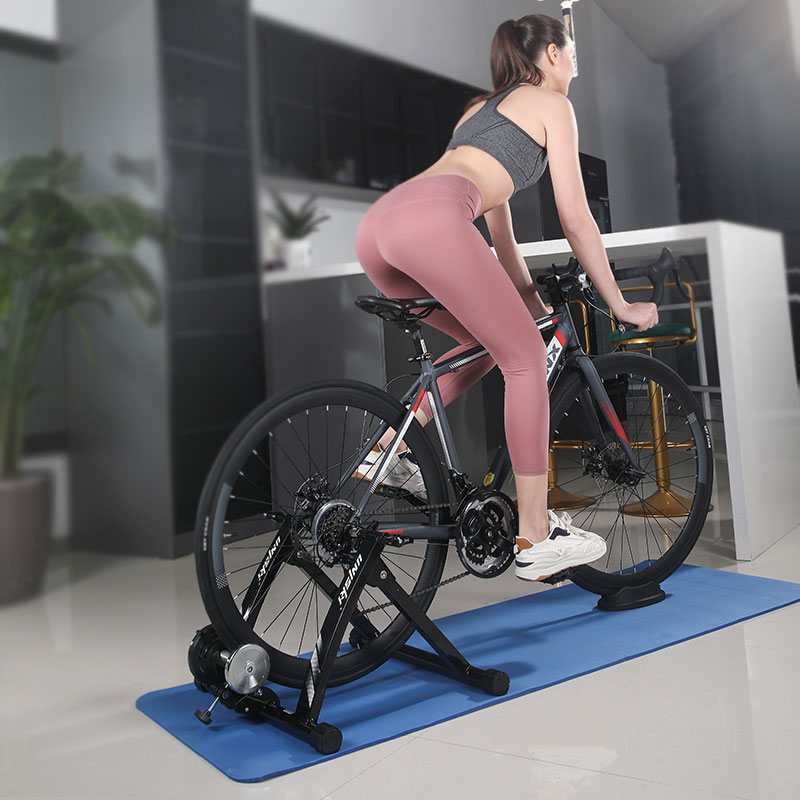
Conclusion
In conclusion, the mechanics of fluid trainers and magnetic trainers are completely different. Fluid trainers employ specially engineered liquids for automatic and realistic resistance adjustments, while magnetic trainers use magnets and offer manual resistance control.
So since both types of bike trainers have their unique features, you should choose the one that suits you most based on your preferences and budget. Also, when you are choosing trainers for your indoor cycling session, remember to consider various aspects such as noise levels, maintenance, cost differences, and the pros and cons of each type.
